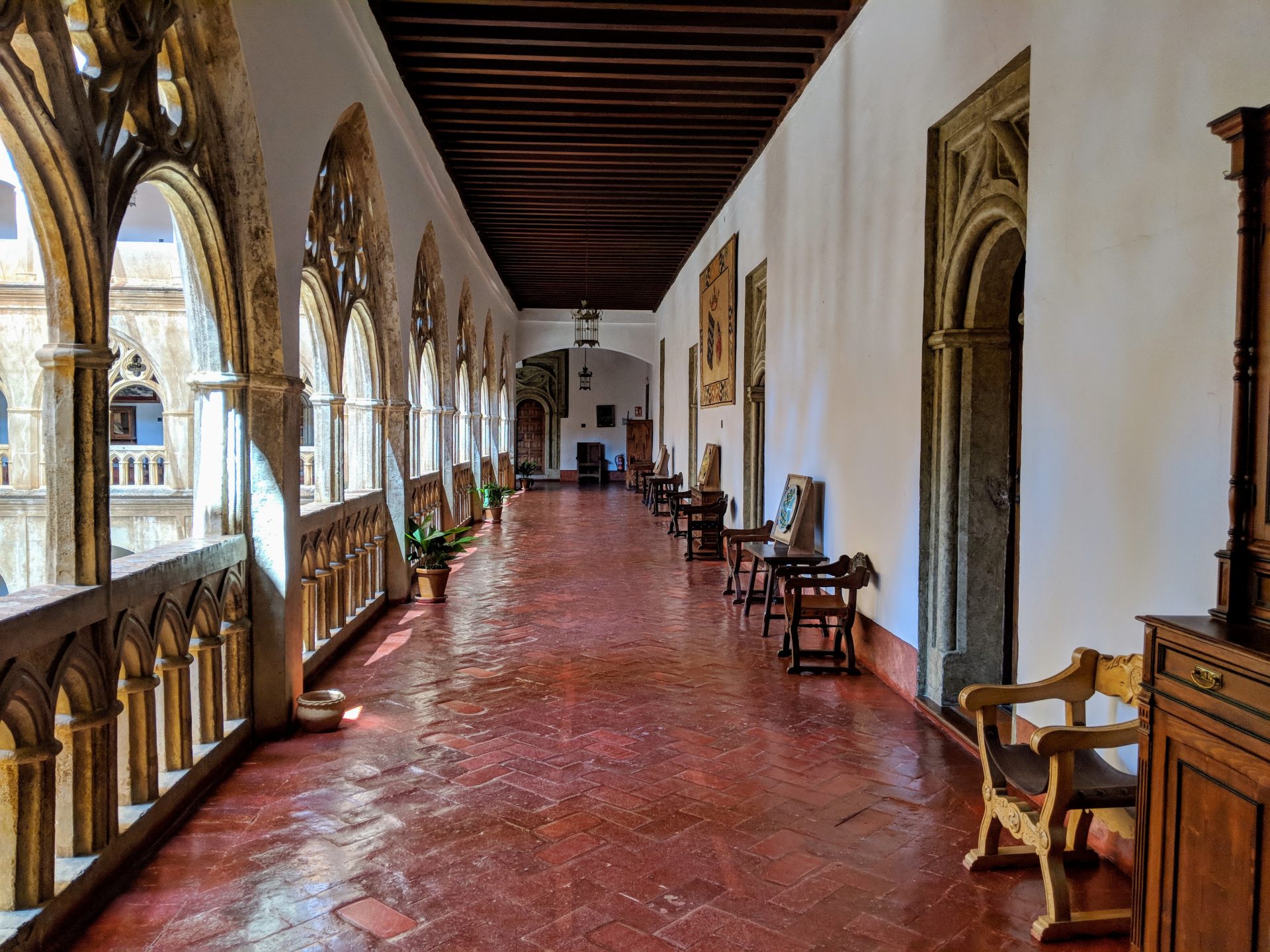“Will you be dining with us this evening?” the porter asked, handing over a large key. Usted, the formal, third-person way of saying ‘you’ (literally ‘your grace’) has all but disappeared in Spain, but not at the Hospedería del Real Monasterio de Guadalupe. I confirmed for 9.30pm and set off to find my room. The key clanked in the lock and echoed around the tiled corridor.
Spain has plenty of monasteries and convents – some still in use, others reformed for tourism – where you can spend the night. But for the full-blown Hispanic religious experience, it’s hard to beat the Hospedería.
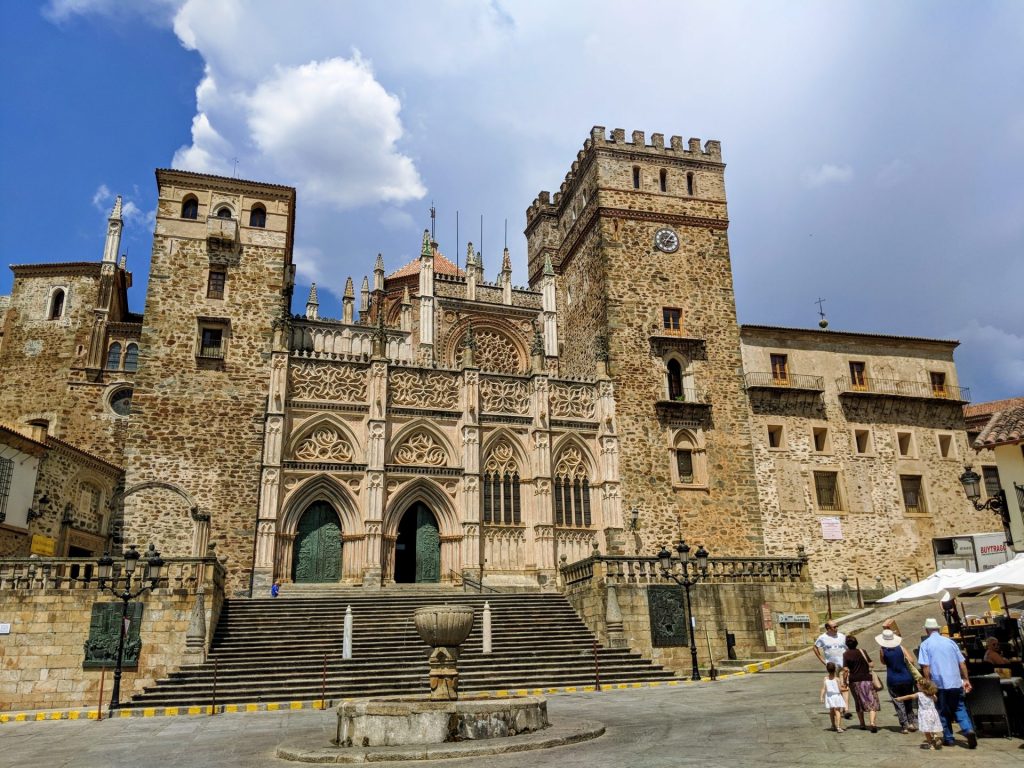
Guadalupe isn’t the sort of place you’re going to stumble upon. Set among the mountainous forests of the Sierra de Villuercas in eastern Extremadura, it is remote even by the secluded standards of the region. Yet coachloads of pilgrims roll up from all over the Spanish speaking world, especially around September 8, el Día de Extremadura.
They come to honour Extremadura’s patron saint, the black Madonna, Our Lady of Guadalupe. She is a two-foot cedar statue of the Virgin with Child, darkened with age, around which a pilgrimage industry has thrived since the Middle Ages.
The story goes that in the 13th century a local farmer discovered the statue while looking for a lost cow. It had been buried centuries earlier by monks fleeing the invading Moors and, it is claimed, was originally carved by St Luke. A chapel was built on the site and miracles followed, but what really shot the place to international fame was that Christopher Columbus came here having discovered America in 1492 and credited Our Lady of Guadalupe with arranging his safe return.
Sponsored by the Catholic Monarchs Isabel and Fernando, the little statue – now dressed in fine robes to appear much taller, with just faces and hands visible – quickly became patron of Spain’s imperial adventure and queen of the Hispanic world.
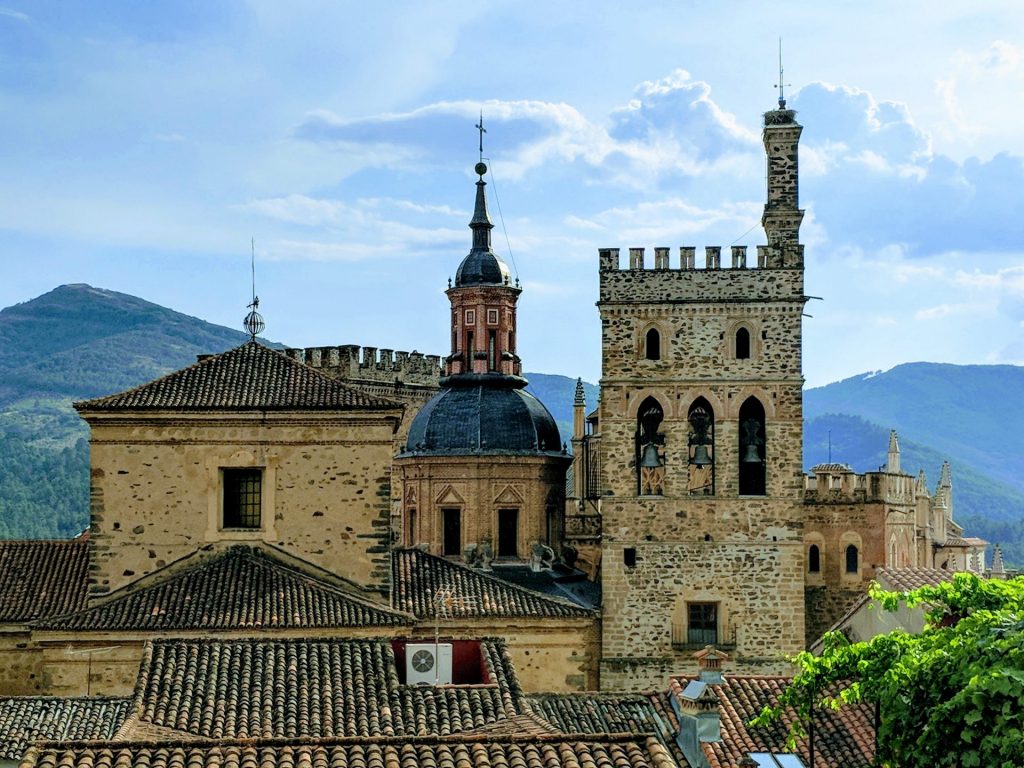
The sprawling monastery dominates the hilltop village of 2,000 inhabitants. As the pilgrimage business boomed, riches flowed in and the Hieronymite monks kept building. They added chapels, temples, cloisters and extensions in Plateresque, Mudéjar, Renaissance and Baroque style – an architectural One Piece at a Time that just about hangs together.
It is stuffed with treasures: gold-encrusted vestments and illuminated manuscripts, paintings by El Greco, Goya and Zurbarán, sculptures from Pedro de Mena and, reputedly, Michelangelo. Bear in mind that this UNESCO World Heritage site also contains your bed for the night.
The main draw is of course Our Lady of Guadalupe. On feast days she is paraded through the streets in golden attire, but usually she inhabits a niche in the monastery. There are two ways to see her. There’s no charge to enter the main basilica at the top of the steps leading up from the Plaza Mayor. At the centre of the floor-to-ceiling altarpiece, on a golden throne, stands the tiny statue. Curiously, every half an hour or so, she disappears.
To get a closer look, I joined a group of pilgrims for the guided tour in Spanish. Neither the group I was with nor the guide seemed to have much interest in lingering at the exhibits, exquisite though they were. We raced through the museum of liturgical robes, barely glanced at the putative Michelangelo; and certainly didn’t do justice to the intensely decorated sacristy, nicknamed the Spanish Sistine Chapel, where Zurbarán’s portraits of Hieronymite monks hang.
When we reached the Camarín chapel and the guide passed the baton to a habit-wearing Franciscan monk, everything slowed down. Now the build-up became almost unbearable. Ladies fanned themselves impatiently. At last, with a gameshow flourish, the monk swivelled a gilded mechanical panel to reveal Our Lady.
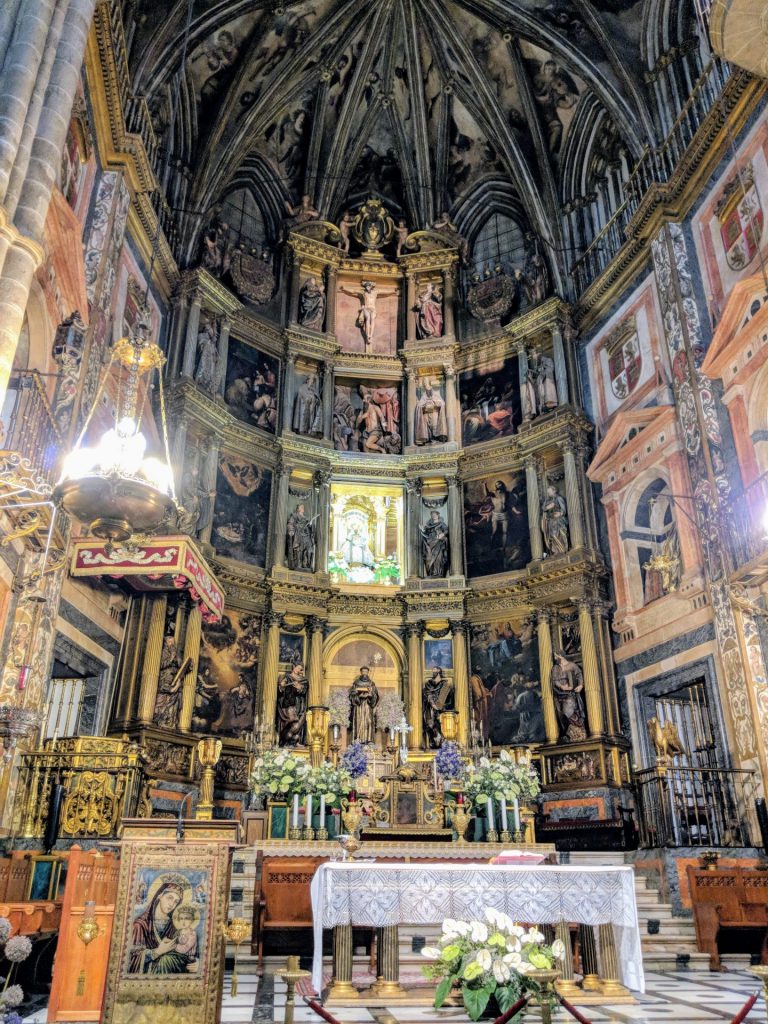
We were viewing the statue from a room behind the altarpiece. Pilgrims gasped, and formed a queue to approach the Virgin and kiss a silver image offered by the monk, who wiped it down after each encounter. Many left the chamber in tears.
Although the monastery throbs with opulence, staying here isn’t expensive. It is squarely aimed at the pilgrim and ecclesiastical market – outside of religious holidays, a double room costs less than 100 euros. Dinner is substantial and affordable rather than adventurous, and the service a little institutional.
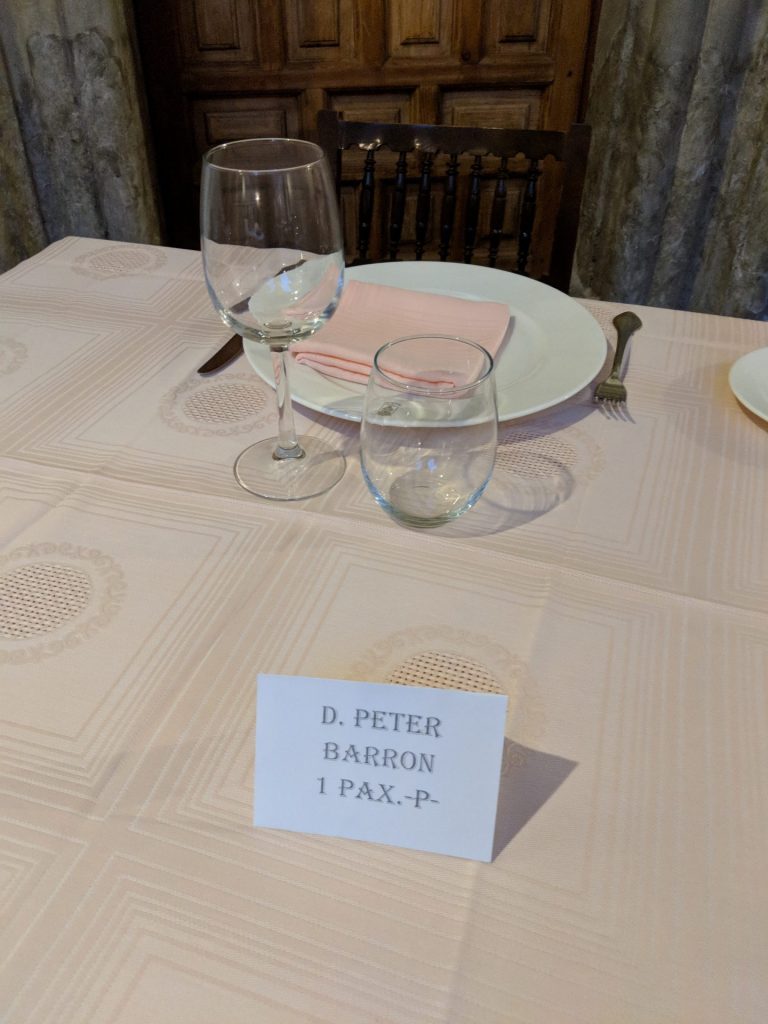
I went for the set menu: gazpacho, slow-cooked lamb stew, chilled red wine and an orange for dessert. The setting is heavenly: in summer, dinner is served in the open-air Gothic cloister.
The great thing about the Hospedería is that everything is just as you’d imagine a stay at a monastery should be. There are no swipe cards or minibars, there are whispering monks, and priests snoozing in the TV room. And when I came down for dinner, the staff had printed out place cards for each table, with a D. for men and Dña. for women. No-one has ever addressed me as Don Peter before or since.
Peter Barron is an author for Frommer’s Spain. Follow his blog at adventuresinextremadura.com
Warning: Illegal string offset 'link_id' in /mnt/storage/stage/www/wp-includes/bookmark.php on line 357
Notice: Trying to get property 'link_id' of non-object in /mnt/storage/stage/www/wp-includes/bookmark.php on line 37


